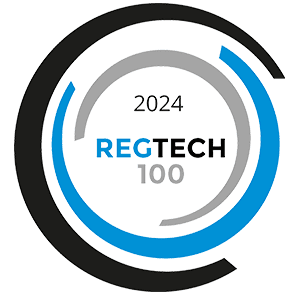One item regulators focus on during almost every audit process is the written supervisory procedures/compliance manual.
With this in mind, you’d think having these guidelines in tip-top shape would be top of mind. However, it’s often one of the most overlooked components of the compliance program.
Why are so many firms and advisors skipping right past their written supervisory procedures/compliance manual instead of keeping their manual ready to go at all times?
It’s because it takes time, which is in short supply for so many of us.
It is a commonplace for individuals registering as investment advisers to purchase and adopt a template manual. This approach is a perfectly acceptable way to get a business’s written manual’s starting point.
However, that’s what it’s intended to be – a starting point, not a final copy.
Many firms purchase a template, think they’re covered, then move on to other pressing day-to-day responsibilities. They do not always take the time needed to customize their templates based on their firm’s business model, services, and fees.
This may seem like a daunting task, but in reality, it can be quite simple. So, how can your firm ensure it’s doing what’s required to make sure their manual is in good shape?
Review it one section at a time.
You may not have time to work through the entire manual in one sitting. You don’t have to.
If you’re purchased a template, there are probably items included that can be personalized, edited, or amended to make it specific to your organization.
Break it up into smaller sections and work through each at your own pace. Make sure you’re noting where you make changes so you have a documented list of your updates.
Review and update regularly.
Your manual isn’t a one-and-done project. When you change a process, a rate, or a fee within your firm, your manual should be updated to reflect that.
Depending on the state(s) where you conduct business, there may be a specific requirement for an annual review. That doesn’t mean you should only review annually.
And, depending on the size and complexity of your operations, you may want to schedule a regular quarterly review to ensure the manual has been updated properly.
Request feedback.
You don’t want the only review your manual receives to be the official one from your regulator. Instead, consider having a third-party review and ensure you’ve covered your bases.
A compliance consultant can work with you to build a manual from scratch or review yours to ensure you’re following best practices for your area. They work with firms across the country and have a great deal of knowledge about what should and shouldn’t be included as a best practice.
Document your process.
You can tell the regulator that you’ve completed a regular review; however, the proof is in the pudding, as the old adage says.
If you review the manual, but you don’t document your review, you’re not protecting yourself or your firm.
It is important to remember that as far as the regulators are concerned, they must be documented in writing if reviews are being done. If not, as far as the examiners are concerned, the review never happened.
You’ll want to document any issues you found and corrected, any rates or fees that changed and were updated, as well as any gaps you find in the manual’s guidelines. Ensure you track these items and when you expect them to be updated/completed so you can show that you’ve done what you needed to keep your firm compliant.
Make the proper amendments.
And finally, and most importantly, when deficiencies are noted, amend the manual.
Your review process is only as valuable as the changes you make to ensure it’s in good shape and up to date. When you make an amendment, notate the update and the completion date, so your regulators can see that you’re keeping your written supervisory procedures/compliance manual top of mind and making it a priority.
The SEC recently issued a Risk Alert regarding compliance programs and the most common deficiencies noted by the SEC examination staff. Although the deficiencies noted in the report seem to focus on larger advisers with multiple employees, reps, and members of management, it provides relevant information for advisors at all levels, including important guidelines for the development of an effective manual.
About Red Oak Compliance
Red Oak Compliance is the global advertising review software of choice in the financial services industry, serving clients with more than $19 trillion in assets under management. Red Oak’s advertising compliance review software offers quick implementation timelines, as well as agile technology that responds to client needs and is 100% Books and Records compliant. Our clients report 35% faster approvals and 70% fewer touches, with many experiencing even better results. Are you ready to minimize risk, reduce costs, and improve efficiency? Contact the Red Oak team to learn how.





